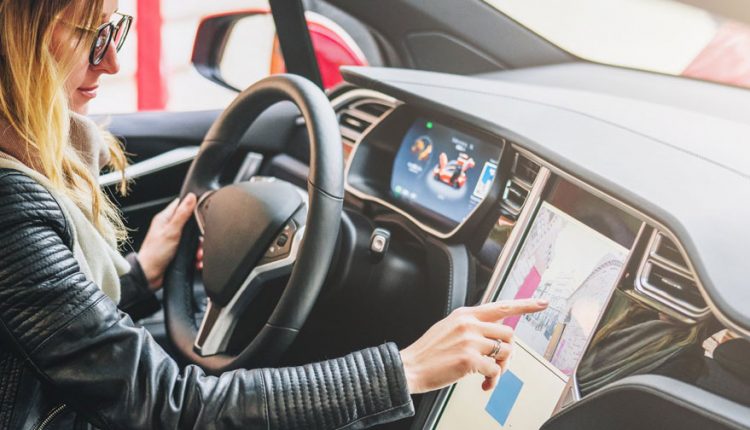Integrated LCD bias delivers small footprint for larger automotive displays
Automotive infotainment designers can now upgrade to bigger, higher resolution displays with greater ease, reduced cost and smaller solution size with the MAX20069 from Maxim Integrated.
According to the company, the MAX20069 provides the industry’s first solution integrating four I2C-controlled, 150mA LED backlight drivers and a four-output thin-film-transistor liquid-crystal display (TFT-LCD) bias in a single chip.
The IC can reduce design footprint up to one-third compared to the closest competitor’s parts.
Automotive displays
Automotive displays are growing larger and more sophisticated as vehicle manufacturers lure buyers with greater information and entertainment options.
Market research suggests a 39% compound annual growth rate for the 8″ display market in vehicle instrument clusters, center stack and heads-up display systems.
Instrument clusters are expected to migrate to 12.3″ displays soon.
As a result, automotive infotainment system designers will require power solutions with precision, flexibility and small overall solution size to meet increasingly complex system requirements.
Larger screen sizes
The MAX20069 supports larger screen sizes and higher resolution by providing positive analog supply voltage (PAVVD) and negative analog supply voltage (NAVDD), both of which are required for low temperature polysilicon panels (LTPS) that deliver higher resolution and lower cost than amorphous silicon panels now currently in use.
The IC also supports the high currents that next-gen displays require, with 150mA per channel in the four-channel LED driver for 8″ or larger displays and higher resolutions.
The MAX20069 operates over the -40°C to 105°C ambient temperature range and is available in a 6x6mm TQFN package.
Key advantages
- High Integration: Reduces design footprint, providing TFT-LCD bias with four rails plus four 150mA LED backlight drivers.
- Single board supports panels from multiple manufacturers through a resistor or I2C programmable sequencing to further reduce solution size
- Utilizes 25 percent of the microcontroller (MCU) register bits versus closest competitor’s solution, eliminating the need for a more powerful and costlier MCU in display designs
- Performance: Delivers twice the dimming ratio compared to the closest competitor’s offering, maintaining panel readability during transition to different light conditions; MAX20069 supports increased resolution through a 10,000:1 pulse-width modulation (PWM) dimming ratio at 200Hz
- Safety and Built-in Diagnostics: An easy-to-use I2C interface quickly pinpoints problems, directing the microcontroller to adjust to conditions or alert the driver of a failure
- Electromagnetic Interference (EMI) Mitigation: 2.2MHz switching frequency, spread spectrum and phase-shift capabilities help mitigate interference and emissions
Commentary
“Automakers are using displays to transform vehicle interiors into a futuristic digital user experience for instrument clusters, center stacks, heads-up displays, eMirrors and other functions,” said Kevin Anderson, Senior Analyst, Power IC Research at IHS Markit.
“We forecast that shipments of automotive panels will increase by 12% this year to reach 165 million units. Maxim’s integrated TFT-LCD bias and LED backlight driver aligns with the growth trends in this category. Anything that helps designers to lower cost, save design space or enhance safety will draw interest.”
“Automotive manufacturers are using more screens, larger panels and brighter displays across several vehicle lines to support a safer and more engaging experience on the road,” said Szukang Hsien, Executive Business Manager, Automotive Business Unit, Maxim Integrated.
“Maxim’s integrated LED backlight driver and TFT-LCD bias solution supports newer panel types to help automotive manufacturers adopt lower cost yet higher resolution panels with smaller solution size and a high level of integration.”

